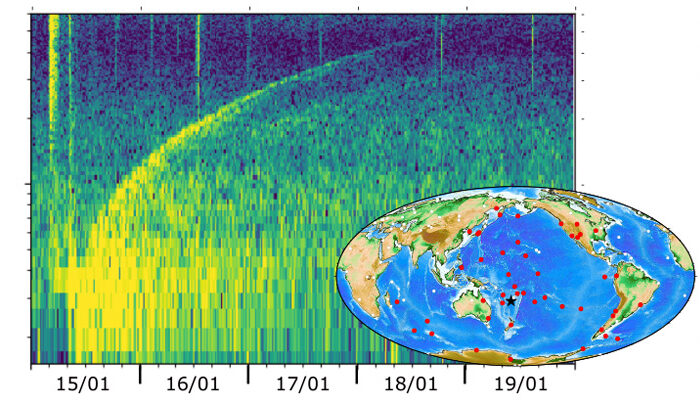The eruption of the Hunga-Tonga volcano in January 2022 generated a strong atmospheric wave that circled the planet several times, as well as an oceanic tsunami detected globally.
Now, a new article from Geosciences Barcelona (GEO3BCN-CSIC) shows that the interaction between these phenomena produced a wave of exceptional duration detected at seismic stations located in Oceania, Asia, and America.
“The detection of a wave for such a long period on seismometers is exceptional and opens the doors to the development of numerical models that explain its origin, probably related to the interaction between the atmosphere, ocean, and solid Earth,” details Jordi Díaz, the author of the article and researcher at GEO3BCN-CSIC.
This new research, published in the journal SEISMICA, shows that seismometers were able to trace the tsunami for almost a week after the eruption. This implies, explains the seismologist, that the lower frequencies of this wave travel much faster than its higher frequencies. As the distance to Hunga-Tonga increases, the delay between low- and high-frequency components also increases, reaching more than five days.
“The seismic record presented in this publication shows new evidence of the exceptional nature of the Hunga-Tonga volcano eruption,” emphasizes Díaz. This article adds to the one published in November 2022 by the GEO3BCN-CSIC researcher, demonstrating that the Earth vibrated for eight hours after the eruption. The study pointed out that the Earth was beating every four and a half minutes in the hours following the major explosion, a phenomenon with only a couple of documented precedents.
Reference
Diaz, J. (2023). Seismic record of a long duration dispersive signal after the 15 January 2022 Hunga-Tonga eruption. Seismica, 2(2). https://doi.org/10.26443/seismica.v2i2.1033

